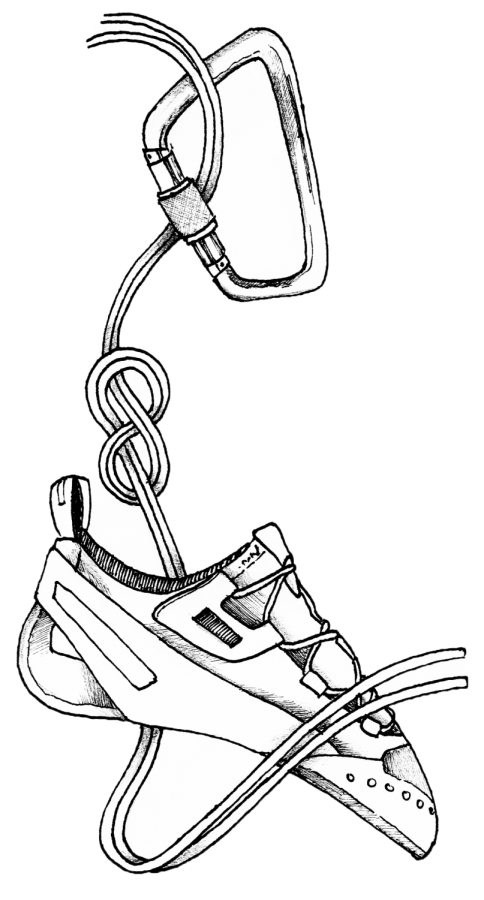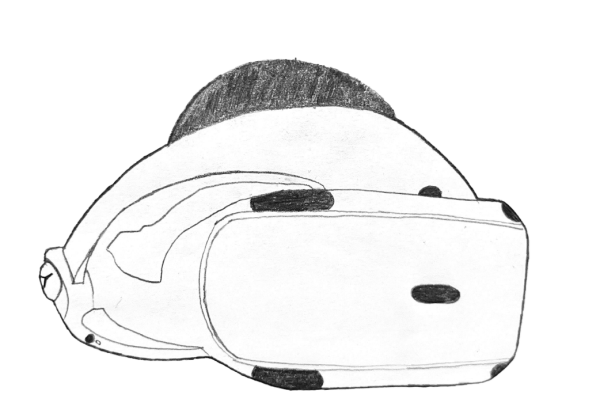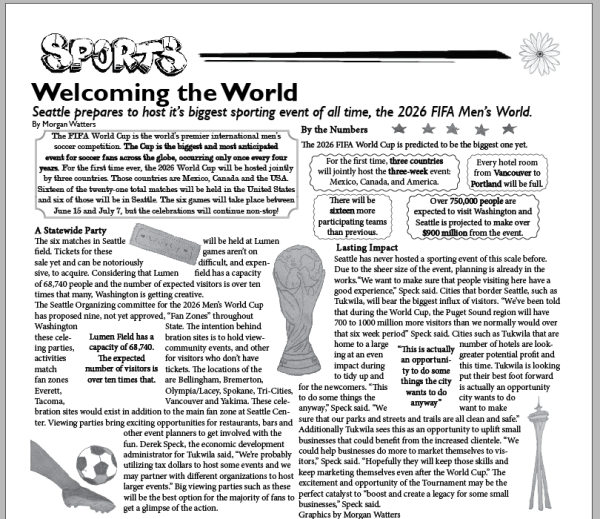Reaching the Summit
Taking a closer look at rock climbing.
It’s easy to join the school sports community here at Garfield, but some students find it valuable to branch out and participate in more unconventional sports. One such sport is bouldering and climbing, which has recently taken off in the Seattle area.
Bouldering is a subset of rock climbing which involves climbing with specific shoes and sometimes chalk for improving grip, and is done mainly indoors. On the other hand, climbing involves ropes, and more often takes place in the great outdoors.
As climbing has grown in popularity as a sport, more and more climbing gyms have popped up across the city, including Stone Gardens and Seattle Bouldering Project (SBP). For many, climbing might appear inaccessible, but as climbing gyms are becoming more convenient and the sport rises in popularity, it is no longer out of reach.
“Bouldering in particular is so easy, all you need is shoes and maybe a chalk bag. Especially if you’re indoors, it’s cheaper, more accessible, and you don’t need all the knowledge of ropes and safety that you do for climbing,” Forest Tschirhart said, a junior at Garfield who has been climbing for as long as he can remember.
Bouldering at places like Stone Gardens or SBP is a perfect way to train for bouldering or climbing outdoors, and living in the Pacific Northwest near top climbing locations like Leavenworth or Gold Bar opens a world of vast opportunities to climbers.
“Having that just a two- or three-hour drive away is really great, you can just go on the weekends. To be a climber, you don’t have to move your whole life somewhere, it’s just right there,” Tschirhart said.
As such an accessible sport, the bouldering community draws in people from all across the city, and continues to diversify. Junior Rylee Bundesmann started her climbing career nearly four years ago, and is now a member of the Seattle Climbing Team through SBP.
“They’re very different people than I usually hang out with, which I think is cool that we have this common thing, and it’s such a strong community that that’s really all we need,” Bundesmann said.
Another junior at Garfield, Sam Halmrast began climbing just three years ago and is now the climbing team captain at Stone Gardens. For Halmrast, the climbing community provides out of school connections with a dependable and laid back group of peers.
“My specific team is a couple people from each school around Seattle, mostly around Ballard because that’s where I climb…It lets me connect to my teammates from different schools, and so I have some points of contact to other parts of the city,” Halmrast said.
One of the pulls for new climbers is the versatility of climbing as a sport. While there is a lot of technique and strategy involved in figuring out each move to make, rock climbers also get creative license while climbing.
“Different problems will have different solutions. Depending on your body type, like how tall you are, how heavy you are, how flexible you are, people can solve them in a lot of different ways,” Tschirhart said.
“One thing I really like about it is that no two routes you ever climb are the same. There’s not one specific motion that you do repeatedly, like swimming for example. You’re building up a collection of possible moves you could apply to each route, and then you have to use them as you see fit,” Halmrast said.
At its core, climbing is based around adaptability, which, according to Bundesmann, allows for a much more even playing field than other in sports.
“Climbs are all different and they all demand different things. You have to be really strong, and have really strong shoulders and back muscles and fingers, but if you have all of that but no balance or footwork you can’t do a climb,” Bundesmann said. “There are twelve year old girls on my team that can climb something that my coaches can’t, because they can fit into a smaller box or they can use the smallest holds.”
Like any sport, bouldering comes with its own set of unique challenges. For both Bundesmann and Halmrast, who boulder competitively, there are a whole different set of things to keep in mind while climbing.
“The trick to competing is figuring out exactly how to do every single move of a climb in 20 to 30 seconds so you still have enough time to actually try it two or three times,” Halmrast said. “Probably [the most important thing to keep in mind is] breath. It took me like two years to learn how to breathe while on the wall, because as you get to harder grades, with every single movement your entire body is tensed.”
“Don’t start to doubt yourself, and focus. I think that’s what climbing has taught me the most, is that you have to focus on one thing at a time,” Bundesmann added.
All in all, the rise of bouldering and climbing comes as no surprise. It has a thriving community, is accessible in the city, and allows for a lot of creative wiggle room.
“It’s really fun if you’re looking for adventure, because that’s not really a thing anymore. All the places to explore have been explored,” Tschirhart added. “So, if you’re looking to do something that very few people have done, like summit a mountain that no one has summited, or get into an adventure, then bouldering and climbing is definitely one of the top options.”

Molly Chapin is a senior at Garfield High School, and this will be her third year working on The Messenger. She is now the Visual and Website Editor, and...







